'Star Trek: Picard' warps onto TV with an okay premiere episode
Aside from exposition excess, scans suggest signs of potential.
Here's your chance to beam out to avoid spoilers for episode 1 of "Star Trek: Picard."
Well, it’s finally here. With the exception of "The Mandalorian" on Disney Plus, "Star Trek: Picard" is probably the most talked about new TV sci-fi in the last few years, ever since it was announced by CBS All Access in August 2018. And in the last few weeks, the Promotion Engine has been running way past the red line.
It's safe to say that every Trekkie (or simply "Star Trek" fan, if you prefer) the world over has been looking forward to this, which no doubt put a lot of pressure on the narrow shoulders of executive producer Alex Kurtzman. Expectations were certainly high, but recently "Trek" hasn't been held accountable to higher standards of writing and production. Take Season 2 of "Star Trek: Discovery" — that was mostly dreadful, yet the excessive exposition, over-emotional overload, contrived plot, convoluted time travel story line and poorly-written finale, is all too easily forgiven.
But what about "Picard?" The new series, which launches today (Jan. 23) on CBS All Access, brings back Sir Patrick Stewart as the iconic Captain Jean-Luc Picard from seven seasons of "Star Trek: The Next Generation," and four feature films. How does this new entry in to the Trek franchise hold up?
Let's warp straight to the chase.
The first few minutes of "Picard" looks great and gives us a warm, fuzzy feeling inside. The episode, entitled "Remembrance" opens with Bing Crosby singing "Blue Skies" and a beautiful, soft, slow montage of cosmic snapshots until the USS Enterprise NCC-1701-D (wait, wasn't that destroyed in "Generations"?) gradually fades into view. (Bing Crosby was also used to great effect on the epic "Short Trek" episode "The Trouble With Edward" so maybe someone in the writer's room is a fan.)
Related: What 'Star Trek' to watch before 'Star Trek: Picard': One epic guide
Get the Space.com Newsletter
Breaking space news, the latest updates on rocket launches, skywatching events and more!

The old girl (that would be the Enterprise) looks as gorgeous as she ever did and we gently zoom into what looks like a deserted Ten Forward. Jean-Luc Picard (Sir Patrick Stewart) and Data (Brent Spiner) are enjoying a game of poker. The dialogue feels organic and the delivery feels authentic. Picard stalls for time and says he doesn’t want to wake from the dream, but he does nonetheless and finds himself in his beautiful rustic bedroom in a château in the Picard vineyard near the French/Swiss border.
Still unsure if he's awake or still dreaming, he walks to the window, throws open the curtains looks to see that everything is normal outside. This is a nice touch and we’d like to have seen it used to even greater effect: perhaps if it could be established that this was indeed his regular go-to mental reality check, a little like Frank Murphy (Roy Scheider) uses his stopwatch in "Blue Thunder" or like the spinning top totem in "Inception."
Related: The Evolution of Star Trek's USS Enterprise in Photos

We cut to a futuristic cityscape at night. It’s less "Blade Runner" and more…er, modern day Dubai, although it’s meant to be Boston. Thankfully though, the 2020 visualization of the 24th century is so much better than then 1987 visualization of the 24th century and that's consistent throughout the episode. The production design has a more realistic look and feel to it, with more than a touch of a retro-tech aesthetic, which is nice.
A young human, Dahj (Isa Briones) is enjoying a romantic meal at home with her boyfriend (he doesn’t have a name for reasons that will become clear in just a second) when suddenly a bunch of tactical gear-wearing goons beam into her apartment, dispatch poor Boyfriend with a knife to the chest and put a black hood over the head of Dahj.
"She hasn't activated yet," says a goon.
And almost as if those were the words that actually did just that, Dahj goes full Jason Bourne and beats the bejesus out of them. Thankfully one of the goons just has time to shriek, "She's activating!" before she breaks a bone or two then dispatches him with his own disruptor. Naturally, she's pretty freaked out.
Related: What Makes a 'Star Trek' Fan? Costumed Trekkies Share Stories
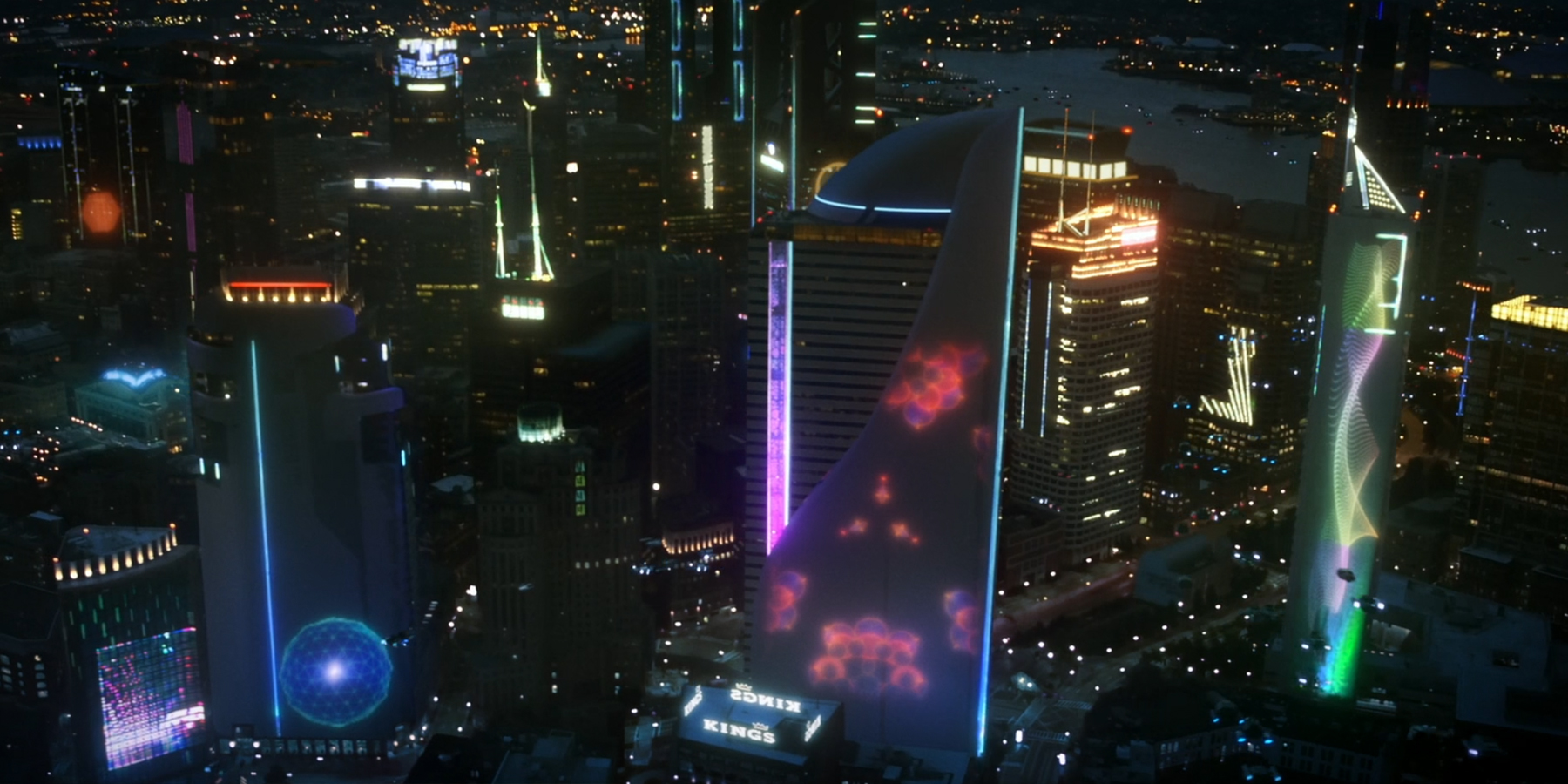
Cue the opening credits and the new theme music, which is .. okay. It leans heavily at first on the cello, which was made popular as a primary theme tune instrument in "Game of Thrones" and again on HBO in the disappointing "Westworld," but thankfully Jeff Russo maximizes the whole of the orchestra and skillfully weaves in the rest of the string section to achieve a soothing score with a subtle, underlying hint of seriousness that is very much in vogue on TV at the moment. It ends with the “Star Trek” chords hanging in the air from a flute, which may or may not be a nod to a particular chapter in Jean-Luc Picard’s past.
We return to château Picard and meet the Romulan couple — Laris (Orla Brady) and Zhaban (Jamie McShane) — who are living there and looking after both Jean-Luc and the vineyard. Well, Laris certainly looks Romulan, but as the episode unfolds, her Irish accent seems to get progressively stronger. The cinematography is beautiful and a vineyard somewhere in Northern California has evidently doubled for the La Barre region of France.
There's a great moment where Picard orders, "Tea, Earl Grey, decaf" from the replicator, which is a wonderful way of showing how times have changed.
Sadly however, this is all for the purpose of setting up a section of the first episode that is also our biggest complaint. Picard is sitting down with a television reporter on the anniversary of the Romulan supernova for his first interview ever since retiring. Apparently it's all agreed that the reporter won’t inquire about his separation from Starfleet .. and already you can see what’s coming from a light-year away.
In essence, this whole scene is a massive exposition dump, so we can quickly and efficiently get caught up with the events of the last 20 years. And just when Admiral Jean-Luc Picard (Retired) starts to open up a little, the reporter becomes aggressive and cuts him off so we can hurry the exposition along and quickly incorporate the controversial element of Picard's actions.
In short, he wanted to give as much assistance to the Romulans as possible before the supernova destroyed their homeworld, but many believed this was a misallocation of Starfleet resources to aid one of the Federation's oldest enemies.
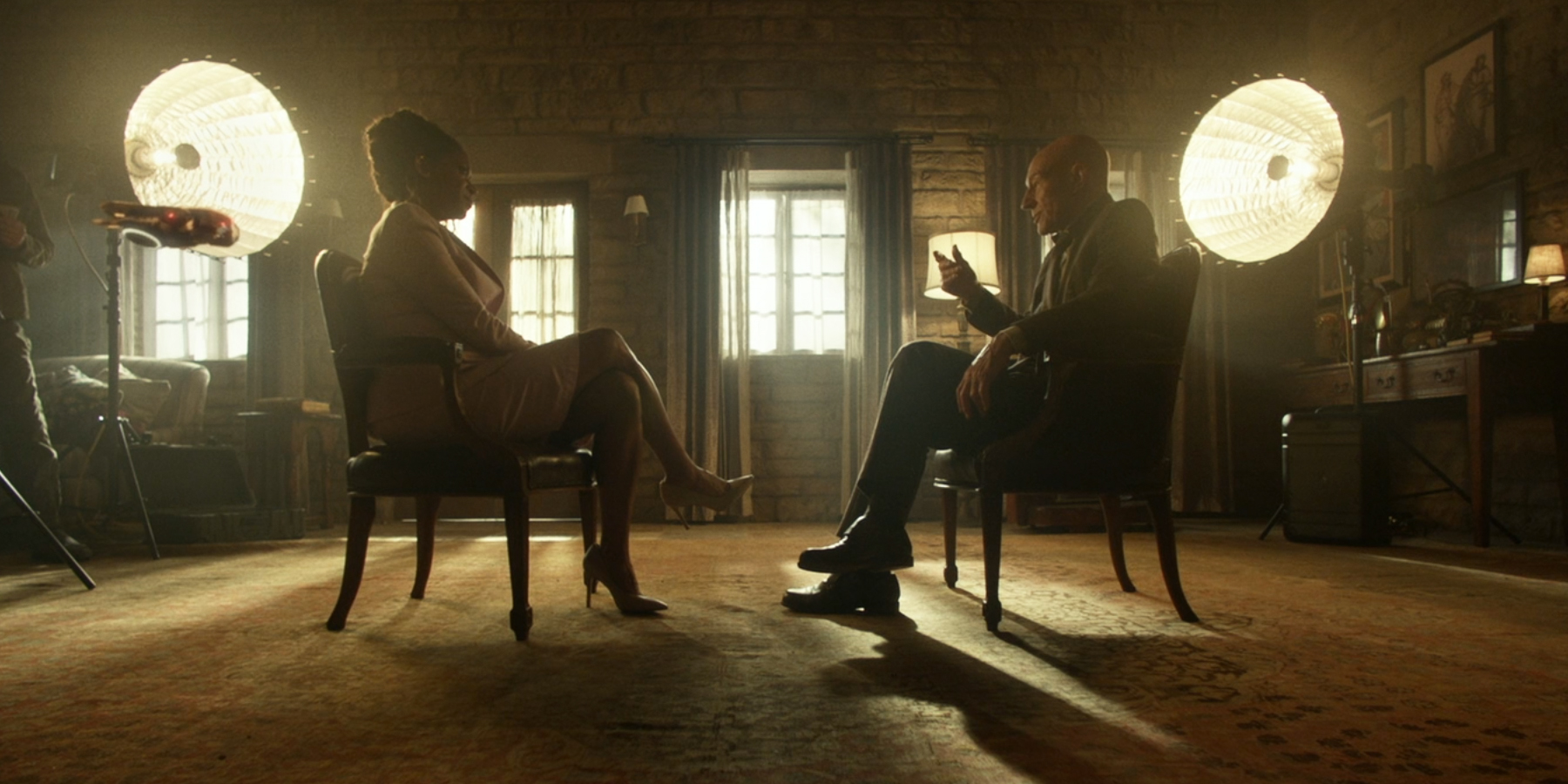
Picard starts to get annoyed and his feelings mirror our own. The reporter again attacks him and he defends himself with a reference to Dunkirk. She continues on an entirely inappropriate line of questioning with the rogue synthetic's attack on Mars, which wiped out the rescue armada and completely destroyed the Utopia Planitia shipyards. Apparently, the resulting explosions ignited the flammable vapors in the stratosphere; Mars remains on fire to this day and 92,143 lives were lost.
Picard goes on record to say that the subsequent decision to ban all artificial lifeforms was a mistake. Finally she pushes him to say why he really quit Starfleet and Picard angrily retorts, "Because it was no longer Starfleet. We withdrew. The galaxy was mourning, burying its dead and Starfleet slunk from its duties. The decision to call off the rescue and to abandon those people that we had sworn to save was not just dishonorable, it was downright criminal. And I was not prepared to just stand by and be a spectator." And we're just about all caught up.
She seems to relish his anger and appears to consider herself having achieved her goal by goading him into a reaction. Perhaps this was the writer's (Michael Chabon, Alex Kurtzman and Kirsten Beyer) way of making a comparison to the state of the media in the 21st century. Certainly some of the events Picard is talking about have parallels in today’s turbulent world.
Granted, it doesn't jar quite as much on the fourth and fifth viewing — and you can see what the writers were trying to do — but the first few times that you watch it, it feels like a shoehorned set piece for the sole purpose of conveniently apprising us with the major events of the past 20 years and how Picard feels about them.
This is all really important information, why does it all have to be unloaded in one five-minute scene? Surely it could've been woven into the story fabric more gradually with greater effect.
Related: 'Star Trek: Picard' Couture: Jean-Luc's 15 Best TNG Outfits
We briefly see Dahj standing in the rain, looking at the telecast interview through a shop window and then we cut back to the Picard vineyard when Dahj suddenly turns up announced at the château. Without so much as a "who the blazes are you?!" or "get off my property!" she's welcomed in with open arms. This feels a little odd and like it’s in the wrong franchise; more like Professor Xavier than Admiral Picard — "come my dear you must be a rogue mutant ..."
Sobbing, she explains what happened and that she keeps seeing Picard's face in her dreams. "Everything inside of me says I'm safe with you," she explains.
Picard appears to wake up and throws open the bedroom curtains … but there’s no activity in the vineyard as there should be. He sees Data painting a picture of a girl, but it's incomplete.
He wakes up from having been asleep at his desk and here would’ve been another nice opportunity to reinforce his regular reality/sanity check by having him wake up in his bed and go to the window to see the activity in the vineyard … before he recognizes the painting that was in his dream as one hanging above his fireplace. It is of a girl that bears an uncanny resemblance to Dahj.
We also learn that Dahj has gone.
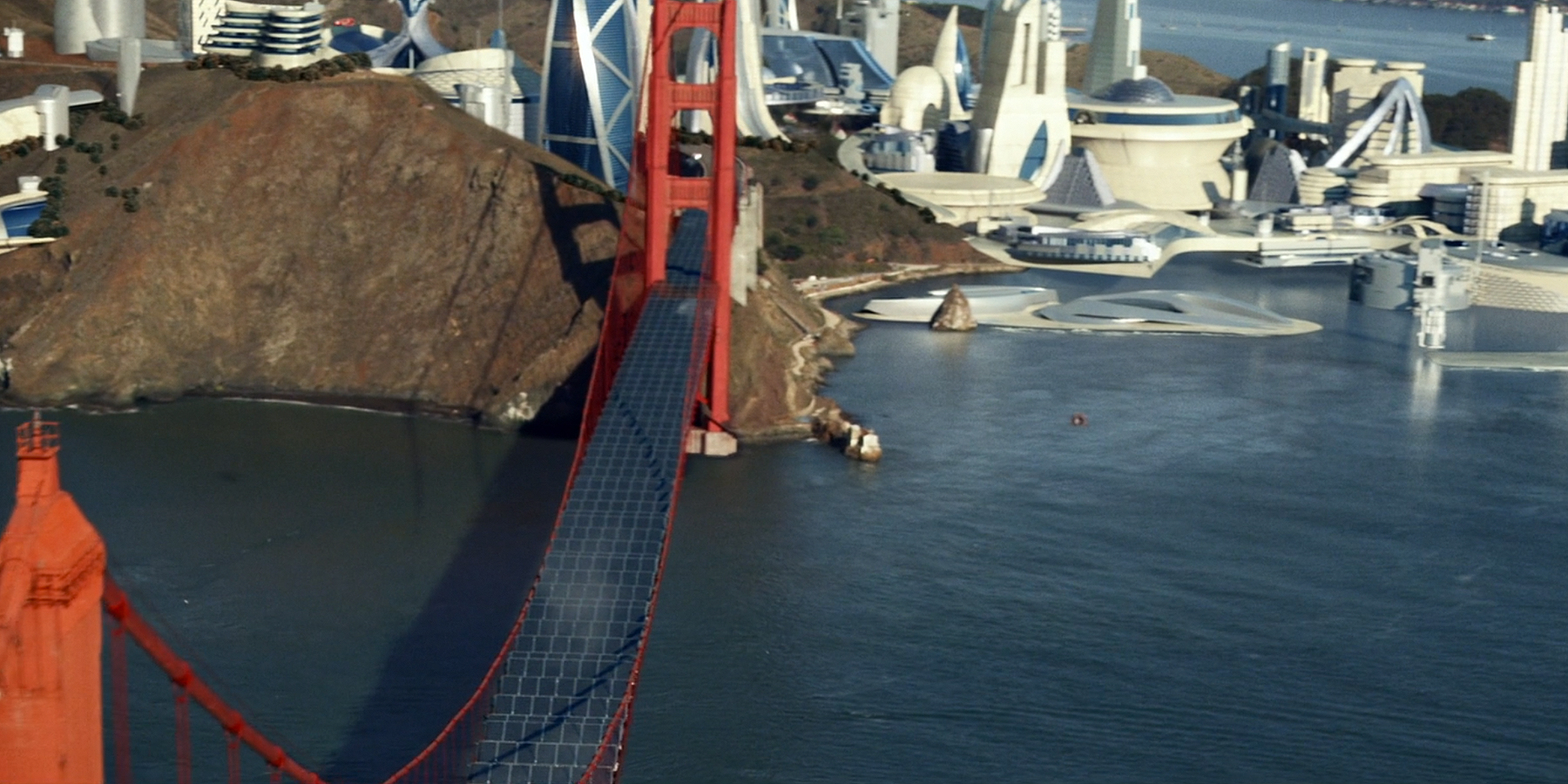
Picard heads to San Francisco to the Starfleet Archives. It seems he's entitled to a whole room of storage and we see models of the USS Stargazer, the Sovereign Class Captain's Yacht and even the Picard Day banner from "The Pegasus" (S07, E12). He locates a package and opens it to reveal an identical oil painting to the one in the dream and hanging on his study wall. Turns out the artwork is called simply "Daughter" and it was painted by Data circa 2369.
Meanwhile Dahj is running through the shadows in the streets of Paris. She pulls out a com device and calls her mum, but it's clear this isn't really her mum, but someone or something manipulating the actions of Dahj. She's advised/ordered to locate Picard once more and she finds him still in San Francisco.
Picard tells Dahj about the painting and explains how the attack on her may have acted like a wake up call, or a positronic alarm bell, first introducing the notion about who and what she might be. However, this jaw-dropping revelation is only allowed to be just that, a jaw-dropping revelation, as Dahj suddenly shrieks, "They’ve found us!"
Related: 6 'Star Trek' Captains, Ranked from Worst to Best
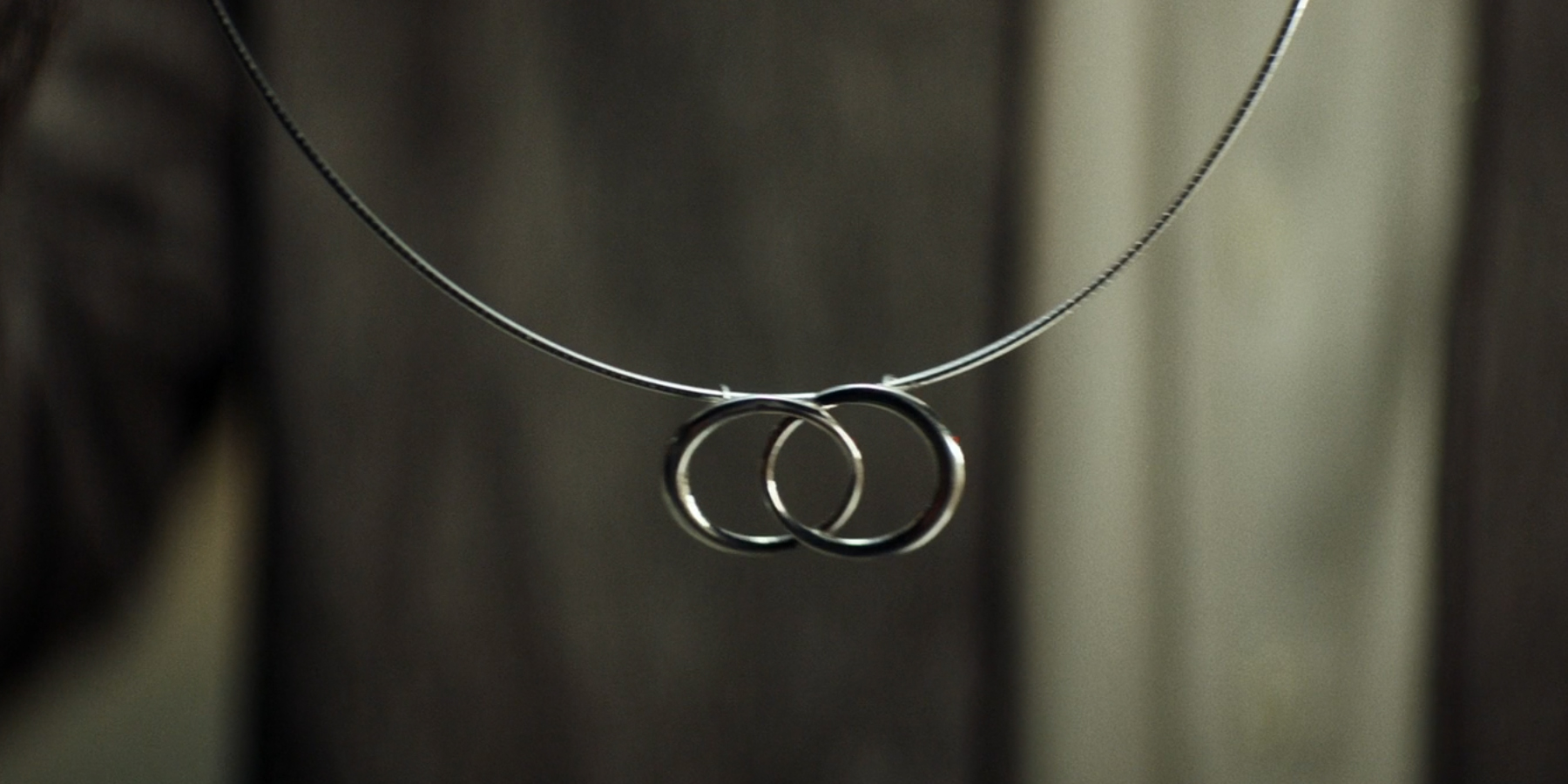
The two of them run up flights of stairs over walkways, the 79-year old Patrick Stewart and the 94-year old Jean-Luc Picard do well to cover the distance. Dahj displays her combat and athletic skills as more of the same tactical gear-wearing goons beam in and try to capture her. The headgear comes off one of the dead goons and Picard sees that they are Romulans. Unfortunately, one of the wounded Romulans spits some weird, green "Alien"-acid-for-blood stuff that hits Dahj and the disruptor rifle she's holding, causing it to overload and explode. (Who knew Romulan stomach acid was so dangerous?) The enormous explosion sends Picard flying and surely would've killed both a 79-year old and a 94-year-old man.
Picard wakes back in the safe hands of his Irish-Romulan care-giver Laris. He reveals that Dahj was a synthetic seeking sanctuary and the attackers were Romulan and there's some utter nonsense about an automatic cloaking device that she must have had. This is followed by a meaningless monologue by Picard about how he should've been doing something rather than nursing his offended dignity, although quite what he thinks he could've been doing instead isn't altogether clear.
However, his next actions are clear and he sets off to visit the Daystrom Institute in Okinawa, Japan; a technology and research center – once famous for its Cybernetics Division — that has existed in "Star Trek" canon since "The Original Series" episode "The Ultimate Computer" (S02, E24). Here he meets with Dr. Agnes Jurati (Alison Pill) and asks how long it would take to create a sentient flesh and blood android (so, a Replicant then). Not for a thousand years she says and Picard replies, "That makes it even more curious that recently I had tea with one."
What follows is another exposition dump, some of it interesting and useful, some is gobbledygook. Following the attack on Mars by a group of rogue synthetics, cybernetics research was gradually restricted until it was shut down altogether. Jurati shows off the disassembled B-4 in a clip that we'd seen in "Picard" trailers. She explains that Data tried to download the contents of his neural net into B-4 just before his death, but almost all of it was lost because B-4 was nothing like Data at all. “In fact, no other synth has been,” she says.
"And there's the rub," Jurati says. "No one has ever been able to recreate the science used to create Data. And then came Bruce Maddox, he recruited me out of Starfleet. Despite Data's death, we came so close … then we got shut down and it crushed him."
Related: The 10 Best 'Star Trek' Episodes Ever
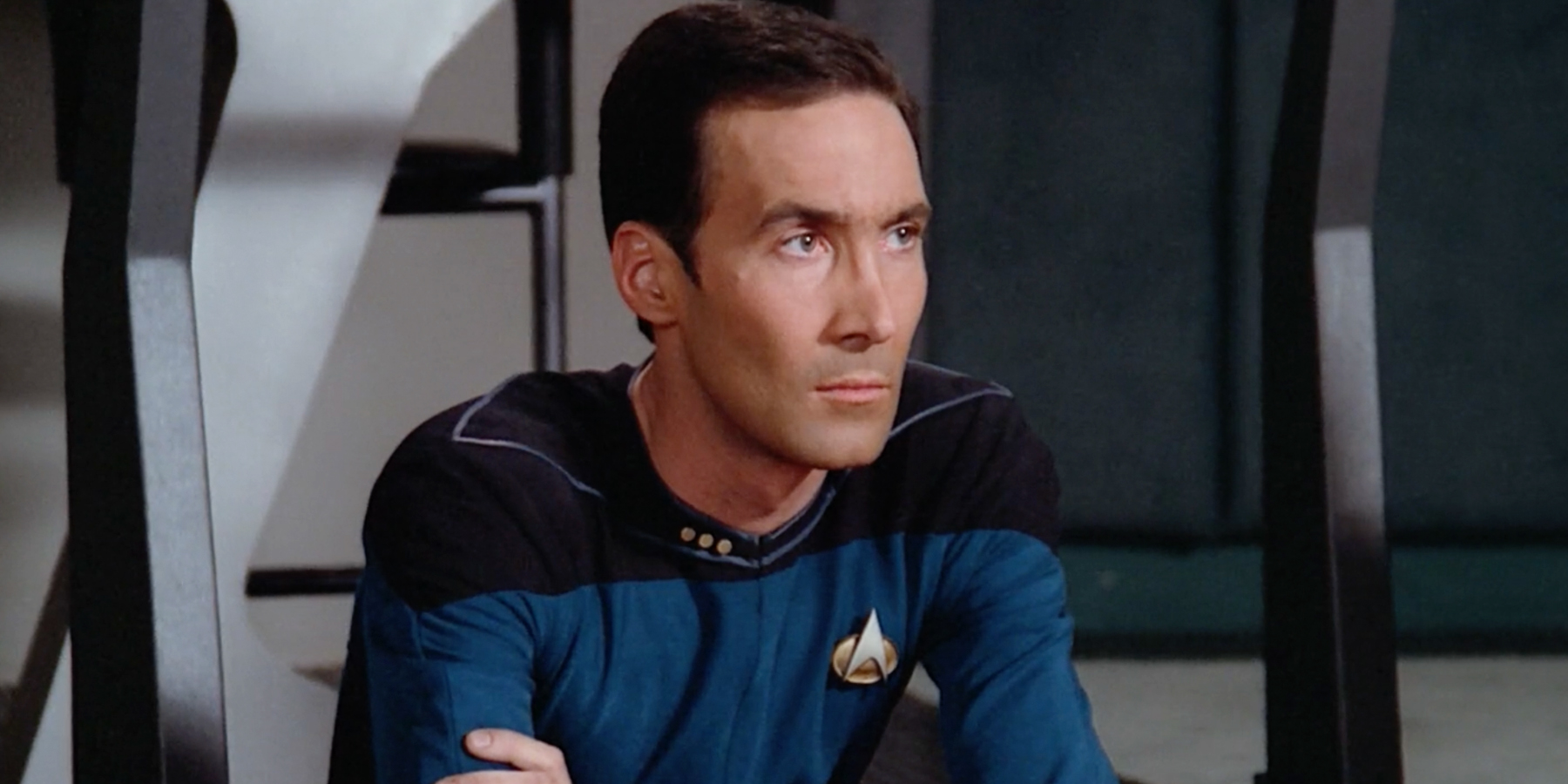
Maddox disappeared after the ban and despite efforts by Dr. Jurati to find him, she's been unable to. Apparently any new, advanced, synthetic would have to be made from Data. (Why?) With access to Data's neural net, perfecting a flesh and blood host body would be simple. (OK, sure.) But, his neurons died with him. (And?) The dialogue here isn't very well written and feels unnecessarily complicated, but it just about makes sense, although this level of analysis really shouldn’t be required to aid understanding, "Star Trek" or any other sci-fi.
According to Jurati, Maddox had a radical, beautiful idea called fractal neuronic cloning, whereby Data’s entire code, even his memories could be reconstituted from a single positronic neuron. She and Picard theorize that if there is a synthetic out there, that is perfect, then an essence of Data would … er, therefore be alive. Hmmm. Not really sure where the writers were going with this one, it sounds like a 4 a.m. solution to a plot problem.
Picard also concludes that Maddox created Dahj and based her appearance from the painting that Data did so many years ago. Jurati then reveals that they (fractal neuronic clones?) were also created in pairs … thus we're introduced, albeit rather clumsily, to the notion that Dahj has a twin.
But … what about Lore?
It’s been a long-running theme within "The Next Generation" that Data is unique. However, according to "Star Trek" history, no one has been able to replicate the technology used to make him, specifically his positronic brain. A number of people have desperately wanted to take him apart and study him, most notably, cyberneticist Commander Bruce Maddox (Brian Brophy) in the "The Next Generation" episode "The Measure of a Man" (S02, E09). And while Data is a sentient being and doesn't deserve a dissection akin to the Dark Ages, surely engineers and scientists could've studied his evil twin, Lore.
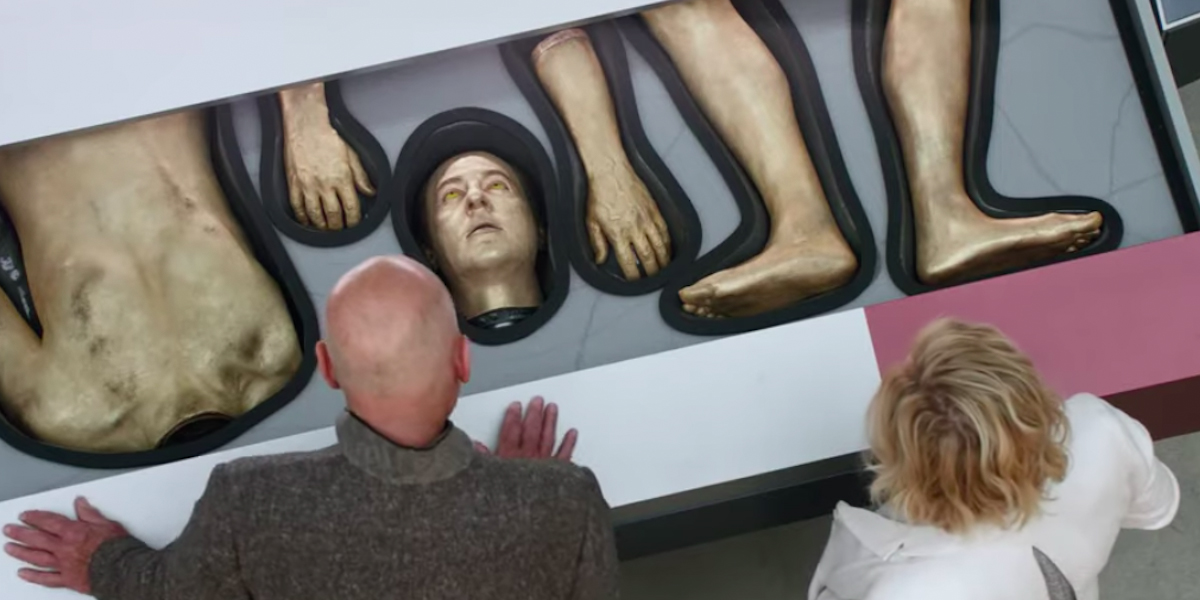
Data was discovered on Omicron Theta by the USS Tripoli in 2338 when it responded to a distress call from the colony following its destruction by the Crystalline Entity. The landing party discovered a signal that led them to the deactivated Soong-type android, Data. Some 26 years later, the USS Enterprise returns to Omicron Theta, Lore is discovered ("The Next Generation" episode "Datalore" S01, E13) and his mischievous reign of evil began.
It ended six years later in 2370, when Lore was dismantled following a failed attempt to lead a small army of Borg drones no longer connected to the hive mind and capture the Enterprise, kill the crew etc.
The events of "Star Trek: Nemesis" take place nine years after this in 2379 and the events of “Picard” are a further 20 years later. Taking into account that all artificial intelligence research was apparently halted within the Federation following the Mars attacks in 2384, then cyberneticists officially had had 14 years to scrutinize Lore as much as they wanted. Moreover, Dr. Noonian Soong constructed Data using technology that existed over 60 years ago and operated unofficially, in secret, as he developed his fourth and fifth generation androids.
So how come no one else has managed to even come close? While we suspect this issue will be addressed in more detail in forthcoming episodes, it strains belief just a little bit. For instance, what happened every time Data stepped onto a transporter pad? We know that Data had a detailed understanding of how he himself worked as we've seen him explain it on numerous occasions. For example, Lore's positronic net differed from Data's: it had a type-L phase discriminator compared to Data's type-R. ("Time’s Arrow" S05, E26 & S06, E01).
And yes, you could argue that Data doesn't in fact have a full understanding of himself, which is why his daughter Lal suffered a total system failure ("The Offspring" S03, E16). But it strains belief just a little bit.
What is interesting is how Maddox might be portrayed as the new Soong; is he creating artificial life off-world and as an out-law, like Soong did on Omicron Theta?
Will Lore show up later in the series? Did he perhaps escape somehow and lead the synthetic’s attack on Mars?
Will the actor Brian Brophy reprise his role as Bruce Maddox? Aside from small very small roles in "The Shawshank Redemption" and "Armageddon," Brophy hasn't appeared in anything since 2014 and according to IMDbPro, he has no industry representation, so it's unlikely.
The Klingon war and subsequent peace was very much a statement on the end of the Cold War. Here, in "Picard" the allegory is fear and racism, but a species isn't actually singled out, instead it’s artificial life. This could be a commentary on how today in 2020 we’re close to developing it and the fears we have, but it could also be a link to “Discovery” and the convoluted Control time-line plot.
And then, for the final scene in the premiere, we cut to deep space and see a strange, as yet unknown spacecraft exiting a weird, two-ring cosmological phenomena that looks a lot like Maddox’s symbol for fractal neuronic cloning, so much so that the edit cut straight from Dahj’s necklace to this. It could just be a coincidence, or it could hold some deeper association.
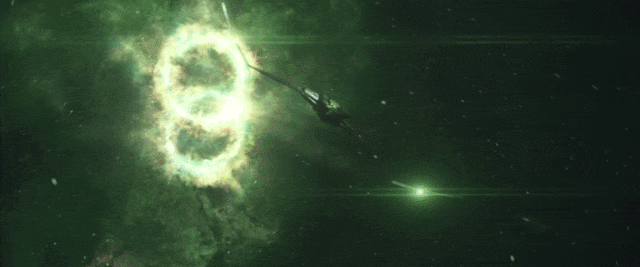
The strange craft, which looks like a cross between a Terrahawk and a Totenkopf Glider from “Sky Captain and The World of Tomorrow,” flies through some force shields and into an area we see is a “Romulan Reclamation Site.” Could this perhaps be a new Bird of Prey?
The reclamation site looks like a massive industrial facility and we are introduced to a Romulan named Narek (Harry Treadaway). He meets with Dr. Soji Asher — also played by Isa Briones and clearly Dahj’s twin. He even points out Asher’s necklace, which is identical to Dahj’s. They engage in a little chit-chat, which feels a bit forced, but that might be more to do with Narek’s personality rather than bad dialogue writing.
And then we zoom out for the big reveal of episode one, the reclamation site, the landing bay and the walkway where Narek and Asher were talking are just one tiny part of a massive Borg cube.
There are, without a doubt, some glimpses of genius — however, there are also some examples of sub-standard writing, which is disappointing given the talent working on this show – but we have high hopes that this show is just going to get better.
Sure, some might be upset that this is a far cry from the familiar "Star Trek" utopia of "The Next Generation," but that's simply outdated thinking. It’s necessary to think chronologically. That Trek TV series was made in the 1980s, the world has changed and our view of the world has changed.
Ron Moore's "Battlestar Galactica" effectively changed how television sci-fi was written and recent global events have shown us that we are far — very far— from being on track to that perfect vision of the 24th century.
Rating: 7/10
Related: 'Star Trek' Picard Series: Here Are Some Bold Ideas We'd Love to See
The 10-episode "Star Trek: Picard" series will air on the paid subscription streaming service CBS All Access in the U.S., and in Canada on Bell Media's Space and OTT service Crave. New episodes will air each week, with episode two arriving on Thursday 30 January, 2020.
CBS and Amazon Studios have announced that the new show will stream exclusively on Amazon Prime Video in more than 200 countries worldwide within 24 hours of its premiere on CBS All Access and Space in the US and Canada, respectively.
CBS All Access subscription is the home of "Star Trek: Picard," "Star Trek: Discovery" and a host of other original and archival CBS television shows. Subscriptions start at $5.99 a month. You can try CBS All Access for a week free here.
- 'Star Trek' Captain's Couture: Picard's 15 Most Memorable TNG Outfits
- Patrick Stewart Almost Turned Down 'Star Trek: Picard'
- 'Star Trek: Discovery' and 'Picard': Here's a Closer Look at Those New Trailers
Follow Scott Snowden on Twitter. Follow us on Twitter @Spacedotcom and on Facebook.

Join our Space Forums to keep talking space on the latest missions, night sky and more! And if you have a news tip, correction or comment, let us know at: community@space.com.
When Scott's application to the NASA astronaut training program was turned down, he was naturally upset...as any 6-year-old boy would be. He chose instead to write as much as he possibly could about science, technology and space exploration. He graduated from The University of Coventry and received his training on Fleet Street in London. He still hopes to be the first journalist in space.
-
GlennMadden I loved the Picard episode 1 because I am hungry for anything new Star Trek. Interesting article you wrote, a little long on words but very informative.Reply
Couple of thing wrong with the series though.
1. How long can the older Patrick Stewart hold up?
2. Brent Spiner "Data" face was bigger, he is older. WRONG ... He is an android who does not age or change appearance.
It will be interesting to see if the series pans out. -
Mike A Reply
In the the Star Trek TNG finale, All Good Things, future Data has a considerable amount of gray hair. He is probably altering his appearance to give the illusion of aging, hence making him seem more human.GlennMadden said:I loved the Picard episode 1 because I am hungry for anything new Star Trek. Interesting article you wrote, a little long on words but very informative.
Couple of thing wrong with the series though.
1. How long can the older Patrick Stewart hold up?
2. Brent Spiner "Data" face was bigger, he is older. WRONG ... He is an android who does not age or change appearance.
It will be interesting to see if the series pans out. -
Woodstock This is one of the most in-depth reviews I've read on 'Picard' – I don't necessarily agree with everything the writer has said, but certainly a lot of it. However, he goes to great lengths to explain why he has these opinions and that's something a lot of reviews don't do particularly well. Long live longform journalism...especially when it's about sci-fi.Reply -
Admiral Bear The review just about sums up my opinions of the first episode, although it's a bit more charitable than I would be. I found the whole thing slow, ponderous, badly written, and cliched, with even Stewart appearing to struggle with much of his dialogue. I'm firmly in the camp of it being solidly "meh". It's far better than Discovery, but given how low that set the bar, improvement was not only necessary, it was almost inevitable. It's better than I expected it to be, although not by much, amd worse than I'd hoped.Reply -
rmurray The first episode was slightly better than marginal. Stewart definitely can still pull it off so I am hopefully that things will develop. If things stay on track we should be in for a good series. Anything is better than Discovery at this point. I cancelled my CBS all access because of season 2 of Discovery. That series flew off the rails quick!Reply -
Vaz The only thing I liked about it was that it is set AFTER the events of Nemesis, and not in some alternate timeline or (ANOTHER!) Prequel series (Enterprise and Discovery).Reply
Other than that one thing alone, I'm not bothering with it, simply because Jeri Ryan is to star in it and (I'm going to irk a lot of people by ssaying this...) I HATE Ryan! She ruined Voyager. I want Kes. -
Chase Williams Hmmmm.Reply
Well I must mirror the sentiment of one of the commenters. It is rather nice to enjoy a full and detailed review.
I really enjoyed the first episode and I'm keen to see the second. I felt on a second and third watch today it grew on me.
Originally I felt it was not as good as I hoped it would be but I think Disco has poisoned my mind to Trek that is outside of what fans of the show historically want.
That said, letting the episode breath a little and embracing the new setting... I found that it was more cerebral (and perhaps a tad cerebro!) and the pacing and general direction and quality of acting was far superior to Discovery.
I think personally it can only get better from here.
As openers go... I think we've been given something enjoyable that appears to want to shine a light on the distaste many of us have the state the world is in but offer us a bit of hope that getting off our backsides might mean we can affect change.
Kudos to the writer for exploring it in such detail. I shall keep my eyes peeled for the review of the next installment.
LLAP
🖖 -
timlister82 ReplyGlennMadden said:I loved the Picard episode 1 because I am hungry for anything new Star Trek.
I think CBS was banking on that because other than Sir Patrick and a few "member berries" sprinkled in there wasn't much else that was good. The plot was a bit silly and they've completely undermined Starfleet in order to give Picard a reason to "lose his faith". -
vfxtodd ReplyWoodstock said:This is one of the most in-depth reviews I've read on 'Picard' – I don't necessarily agree with everything the writer has said, but certainly a lot of it. However, he goes to great lengths to explain why he has these opinions and that's something a lot of reviews don't do particularly well. Long live longform journalism...especially when it's about sci-fi.
Actually, I think it's one of the worst reviews ever written about any film or show. A respectable critic doesn't give away the entire show, scene by scene, as this guy does. Such reviews ruin the experience for anyone who hasn't seen the show, yet.
This is one person's opinion. There's nothing factual about it. I think he's wrong on most counts. Film critics are actually quite useless. Because they always bring their own baggage to their review. I once read a critic's review about a horror film after I read another one of his articles where he expressly states that he hates horror films. So, why should I read the review of a horror film by a critic who openly hates horror films? That would make me stupid. Yet, here he is, critiquing a horror film.
I find that the only time to read a critic's "full length" review is AFTER I've seen the show or movie. That way I can compare my personal experience to theirs. Some people say that critics help them save money for movies by reading their reviews. That assumes that your experience will be identical to the critic's before you've even seen the film or TV show. Personally, I can never take this critic's opinion seriously. The fact that he reveals almost every scene in his review of "Picard" shows that he not only has no respect for the medium, he also doesn't respect the views of his own audience. Good critics don't give away every beat of a story. This twit does.










